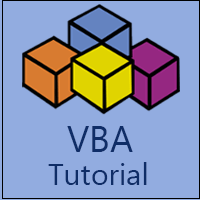

You can download the workbook with all the code examples from the top of this post. InputBox( "Error Value", Type:=16)ĭebug.Print. InputBox( "Boolean", Type:=4)ĭebug.Print. InputBox( "Formula", Type:=0)ĭebug.Print.

You can add validation to the InputBox function using the Type parameter: ' Public Sub InputBoxTypes()ĭebug.Print. ' Print to the Immediate Window Debug.Print sValue SValue = Application.InputBox( "Please enter your name", "Name Entry") The following code asks the user for a name and writes it to the Immediate Window(Ctrl + G): ' Description: Gets a value from the InputBox ' The result is written to the Immediate Window(Ctrl + G) ' Sub GetValue() If you want to get a single piece of text or value from the user you can use the InputBox. If vbResult = vbYes Then Debug.Print "The user clicked Yes" ElseIf vbResult = vbNo Then Debug.Print "The user clicked No" Else Debug.Print "The user clicked Cancel" End If End Sub VbResult = MsgBox( "Do you wish to continue? ", vbYesNoCancel) ' Display Yes/No buttons and get response Dim vbResult As VbMsgBoxResult In the final example we ask the user to click Yes, No or Cancel ' Sub MessagesYesNoCancel() ' Display Yes/No buttons and get response If MsgBox( "Do you wish to continue? ", vbYesNo) = vbYes Then Debug.Print "The user clicked Yes" Else Debug.Print "The user clicked No" End If End Sub

In the next example, we ask the user to click Yes or No and print a message displaying which button was clicked ' Sub MessagesYesNoWithResponse() MsgBox "There is no data on this worksheet ",, "Error" End Sub MsgBox "There is no data on this worksheet " ' Basic message with "Error" as title The following code shows two simple examples of using a message box ' Sub BasicMessage()

You can easily find out which of these buttons the user clicked on and use the results in your code. You can choose from a collection of buttons such as Yes, No, Ok and Cancel. The VBA message box allows you to display a dialog to the user. These can be very useful and may save you having to create a custom one. Let’s start by having a look at the MsgBox. It is important to note that VBA has some useful built-in UserForms. There are other controls but these are the ones you will use most of the time.
Excel vba tutorial yo how to#
This post will contain a ton of examples showing how to use each of these controls. In the second part of this post I will cover the main controls such as the ListBox, the ComboBox(also called the Dropdown menu), the TextBox and the CheckBox. I will also show you how to easily pass the users selection back to the calling procedure. This first post covers creating the VBA Userform and using it as modal or modeless. In these two blog posts( part 2 is here) I will show you how to quickly and easily add a UserForm to your application. As with most topics in VBA, 90% of the time you will only need 10% of the functionality. If you are new to UserForms you may be overwhelmed by the amount of information about them. It provides a practical way for your application to get information from the user.
Excel vba tutorial yo full#
( Note: Website members have access to the full webinar archive.) If you are a member of the website, click on the image below to view the webinar for this post. The following table provides a quick guide to the most common features of the UserForm Function 17.3 Putting All the Modal Code Together.17.1 Using UserForm_Quer圜lose to Cancel the UserForm.15 The Initialize Event of the VBA UserForm.11 Setting the Properties of the UserForm.


 0 kommentar(er)
0 kommentar(er)
